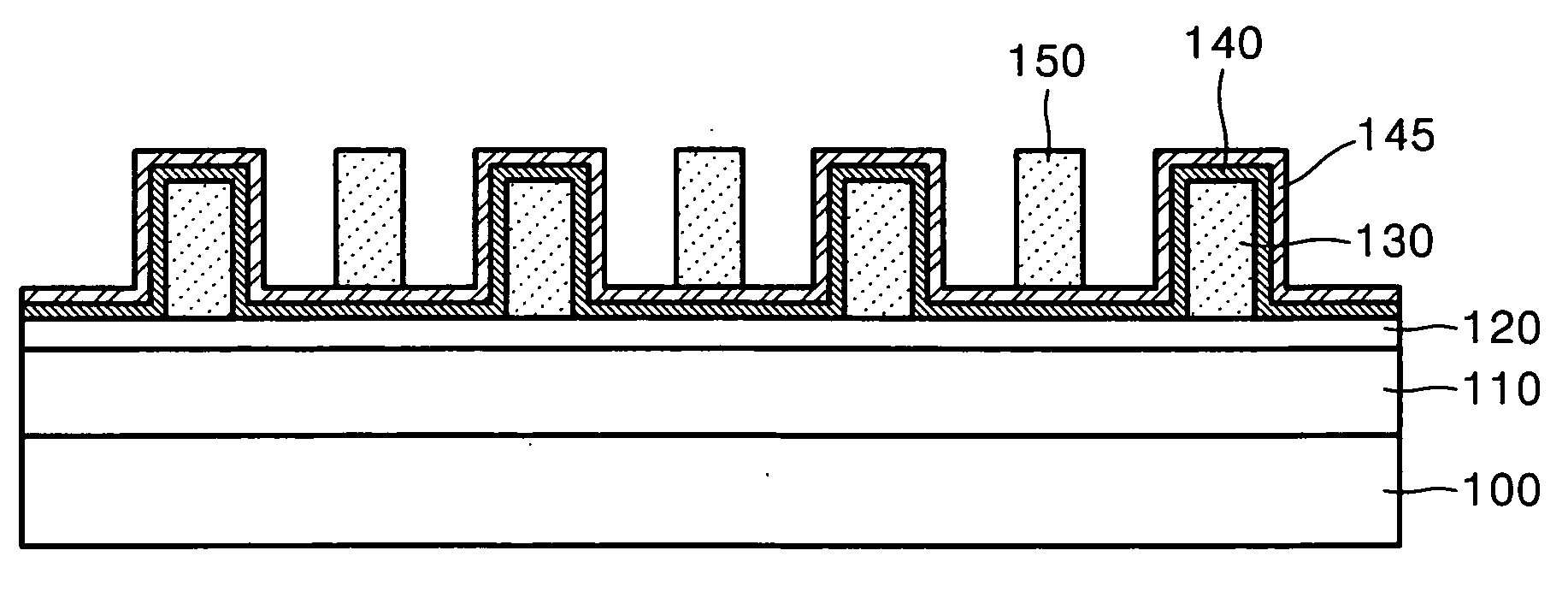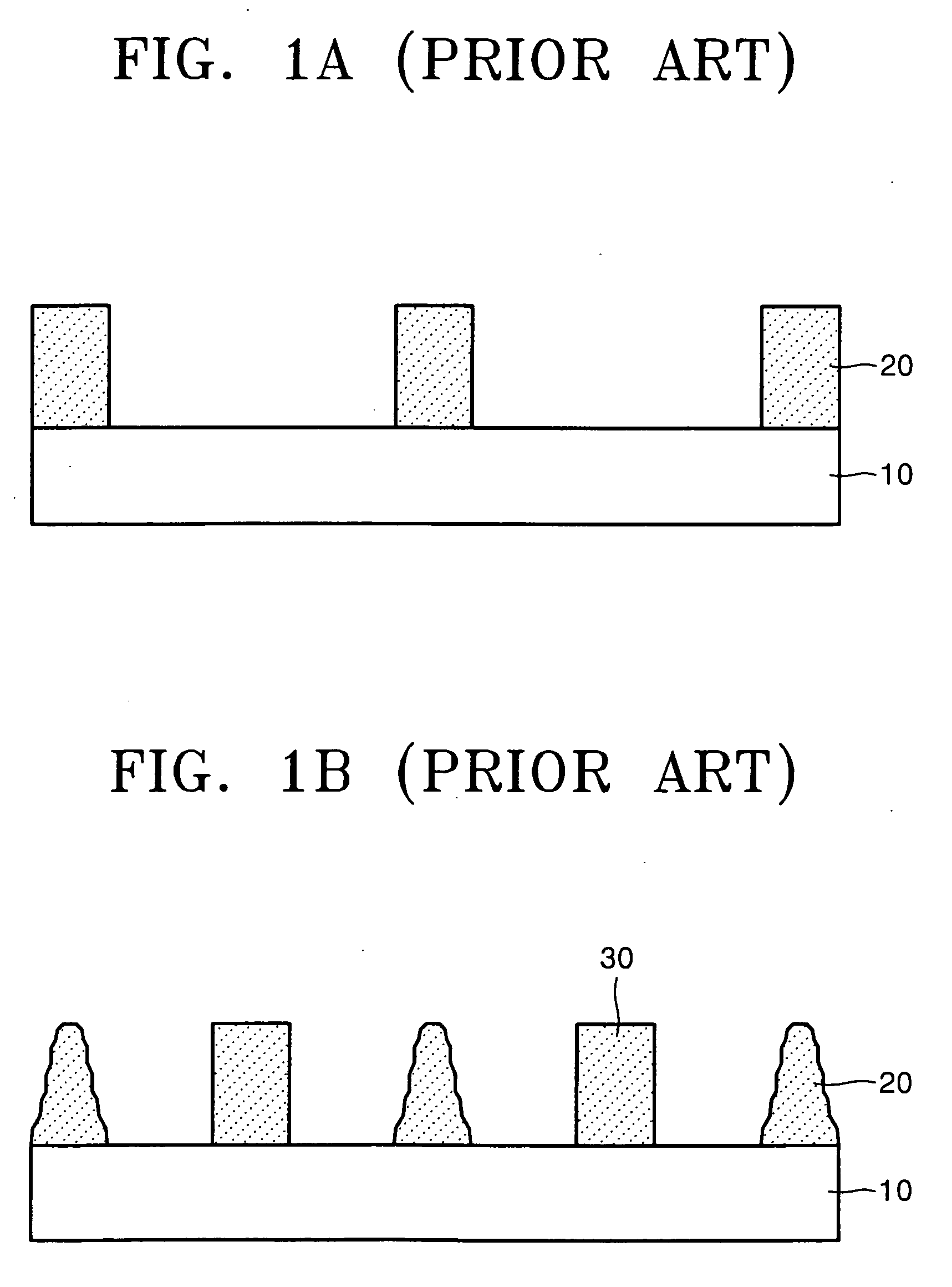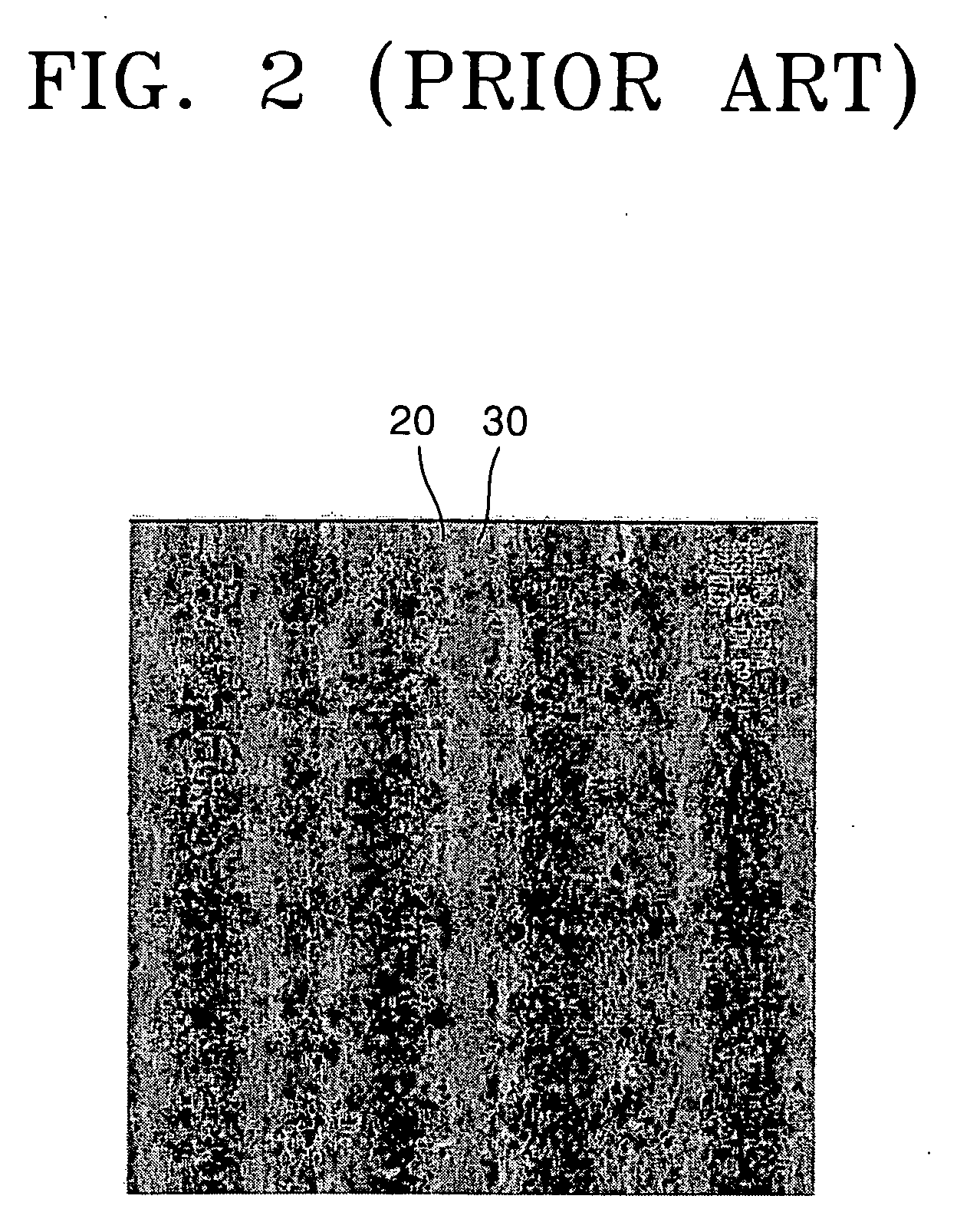Method of forming fine pitch photoresist patterns using double patterning technique
a patterning technique and patterning technology, applied in the field of photoresist pattern formation, can solve the problems of intermixing problem, insufficient resolution of krf or arf lasers,
- Summary
- Abstract
- Description
- Claims
- Application Information
AI Technical Summary
Benefits of technology
Problems solved by technology
Method used
Image
Examples
Embodiment Construction
[0025] Exemplary embodiments of the invention are described below with reference to the corresponding drawings. These embodiments are presented as teaching examples. The actual scope of the invention is defined by the claims that follow.
[0026]FIGS. 3A through 3C are cross-sectional views illustrating a method of forming fine pitch photoresist patterns using a double patterning method according to an embodiment of the present invention.
[0027] Referring to FIG. 3A, a layer 110 is formed on a semiconductor substrate 100. A bottom anti reflective coating (BARC) film 120 is then formed on layer 110. BARC film 120 comprises an organic material and is used to prevent diffused reflection in an exposure process used to form a first photoresist pattern 130. A first photoresist film (not shown) is formed on BARC film 120 and then first photoresist pattern 130 is formed by exposing and developing a portion of the first photoresist film. Preferably, first photoresist pattern 130 is formed to h...
PUM
 Login to View More
Login to View More Abstract
Description
Claims
Application Information
 Login to View More
Login to View More - R&D
- Intellectual Property
- Life Sciences
- Materials
- Tech Scout
- Unparalleled Data Quality
- Higher Quality Content
- 60% Fewer Hallucinations
Browse by: Latest US Patents, China's latest patents, Technical Efficacy Thesaurus, Application Domain, Technology Topic, Popular Technical Reports.
© 2025 PatSnap. All rights reserved.Legal|Privacy policy|Modern Slavery Act Transparency Statement|Sitemap|About US| Contact US: help@patsnap.com



